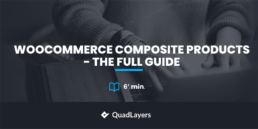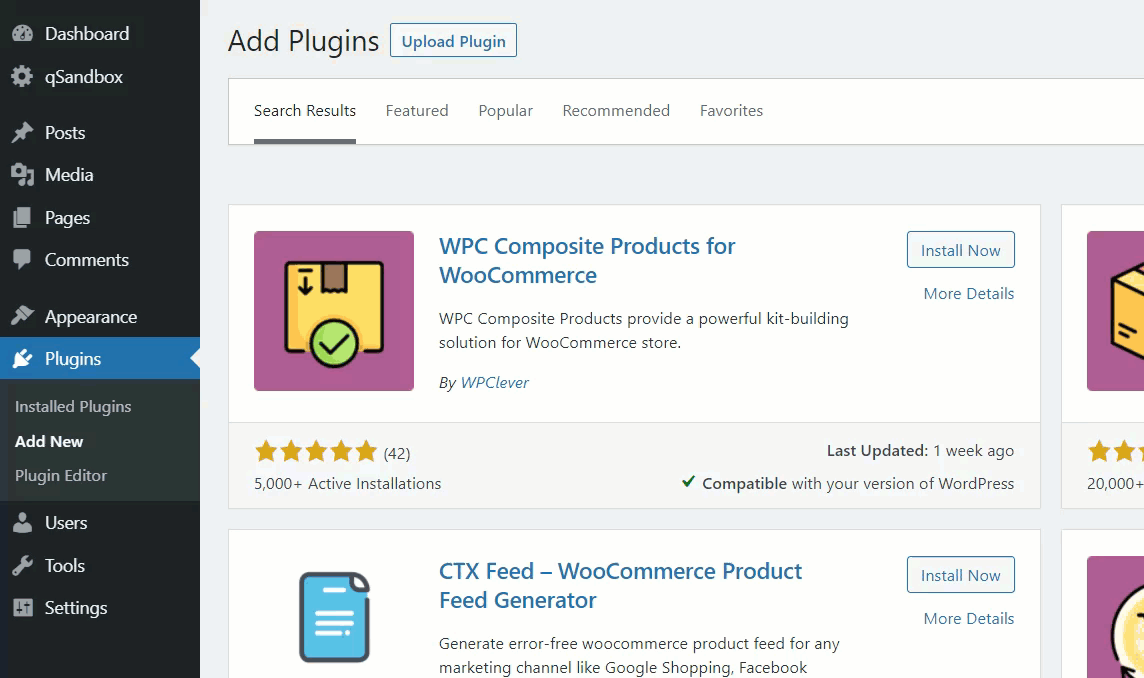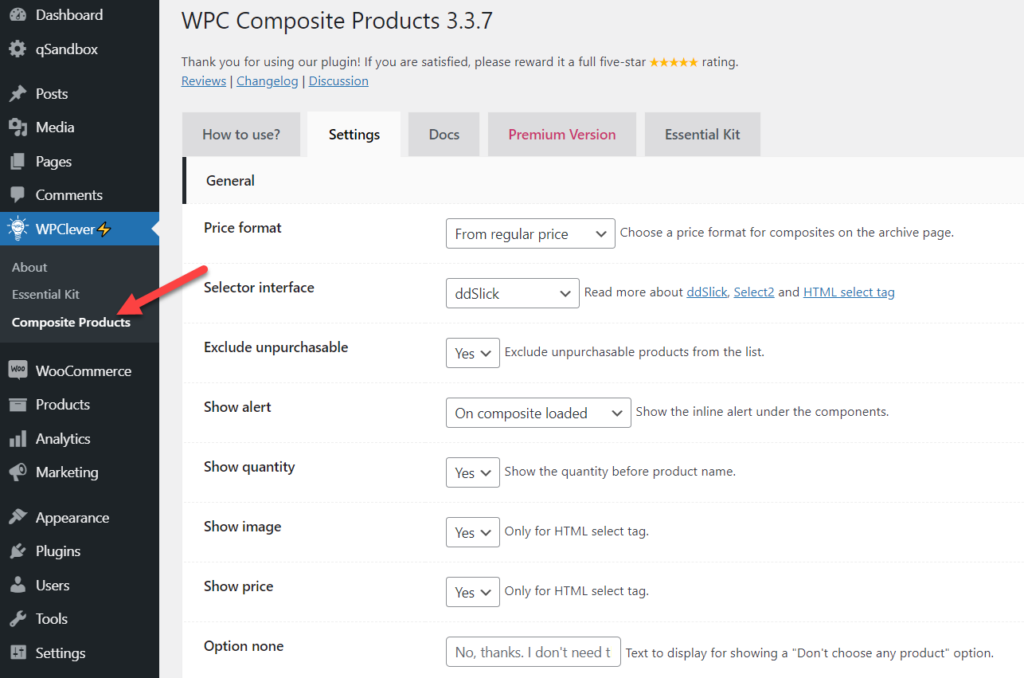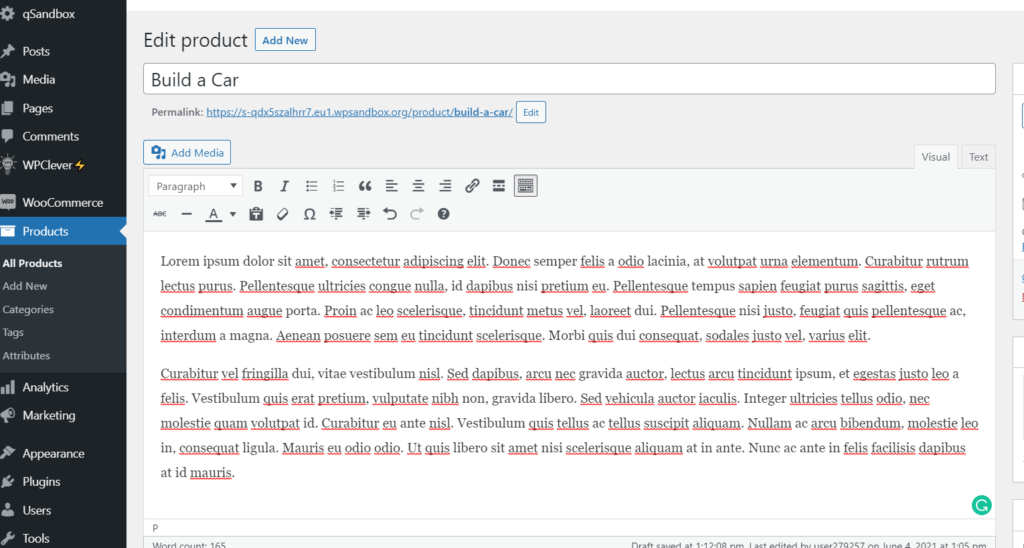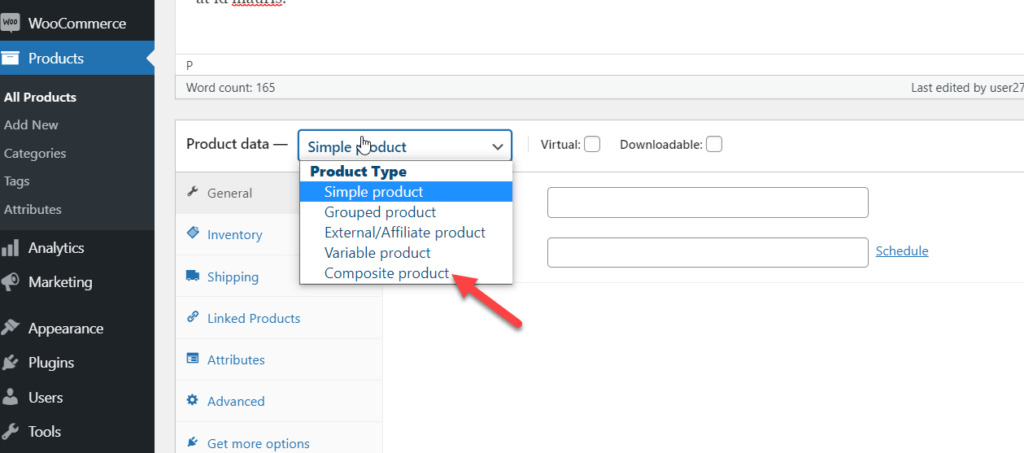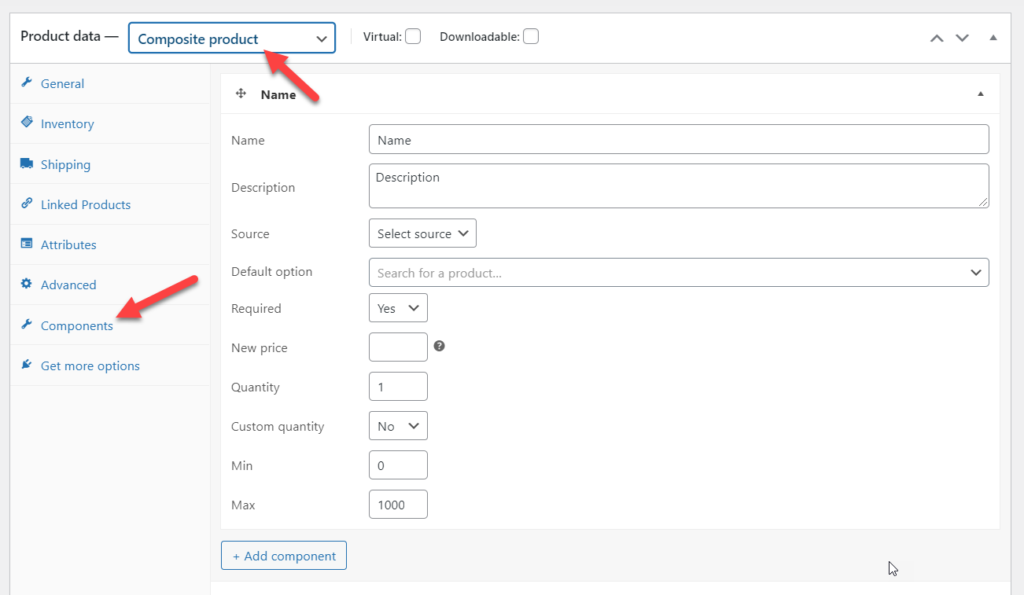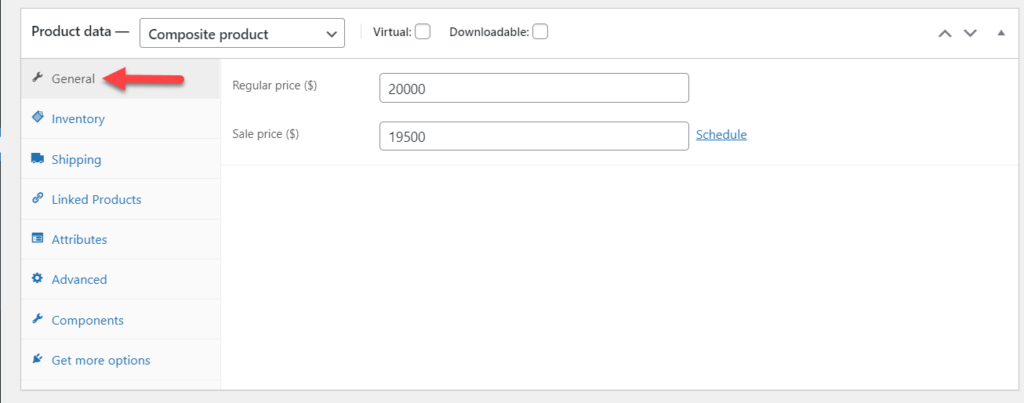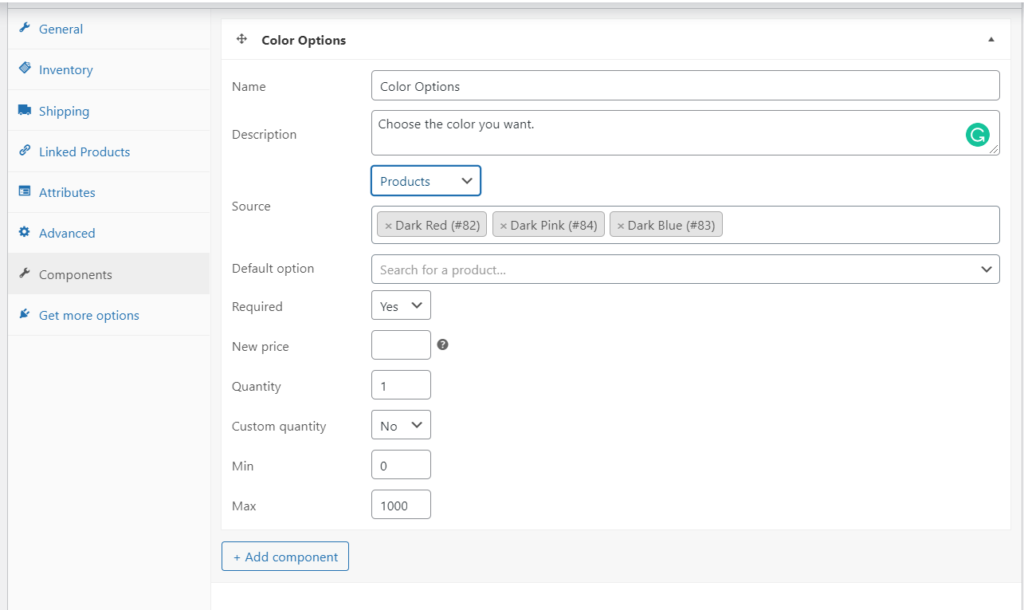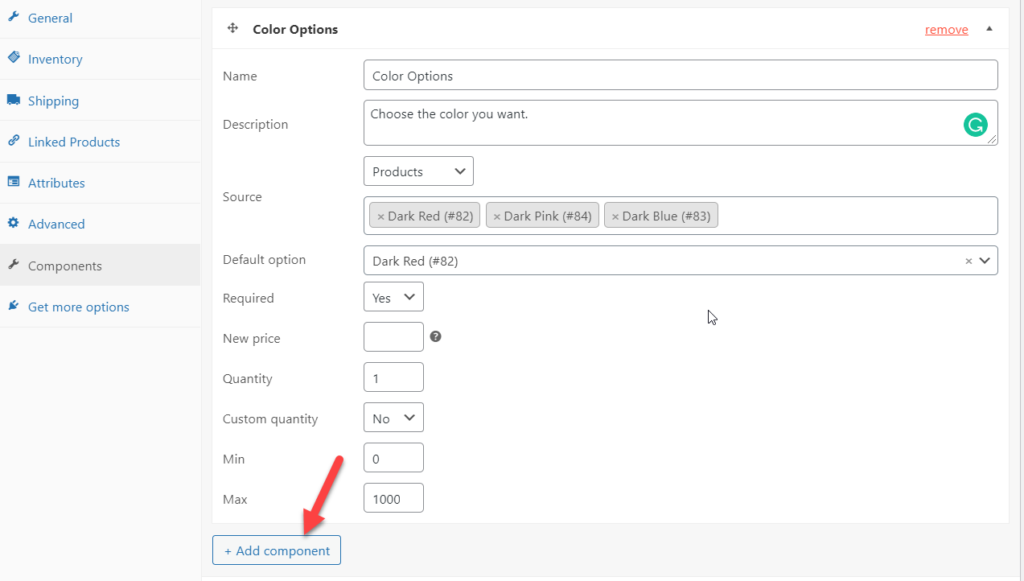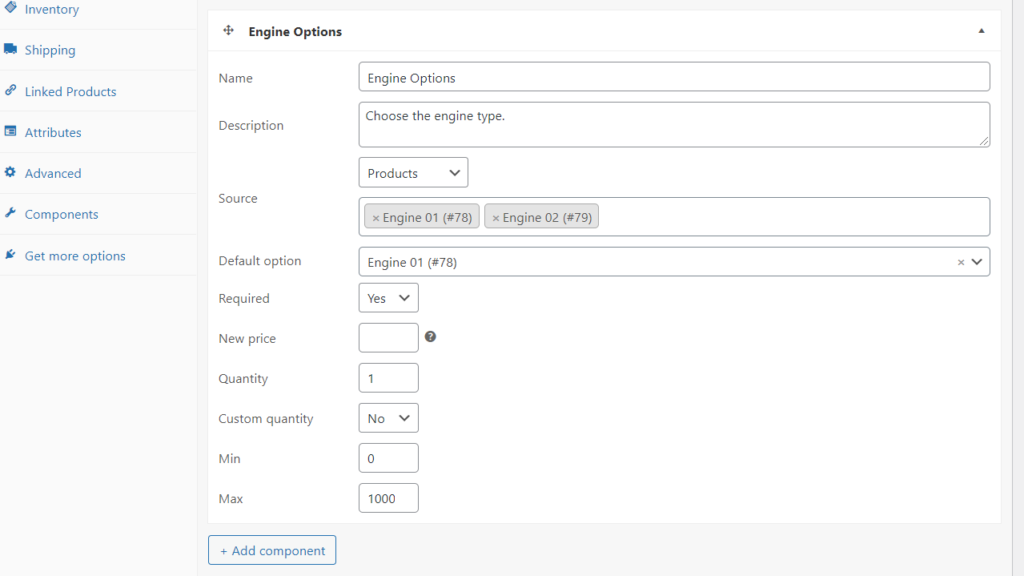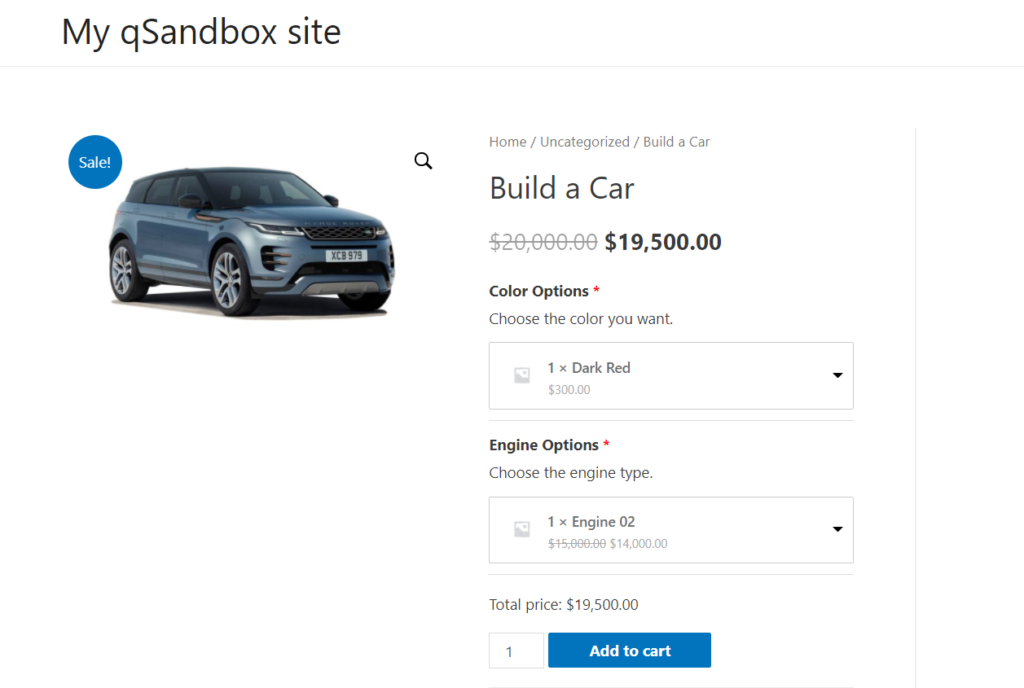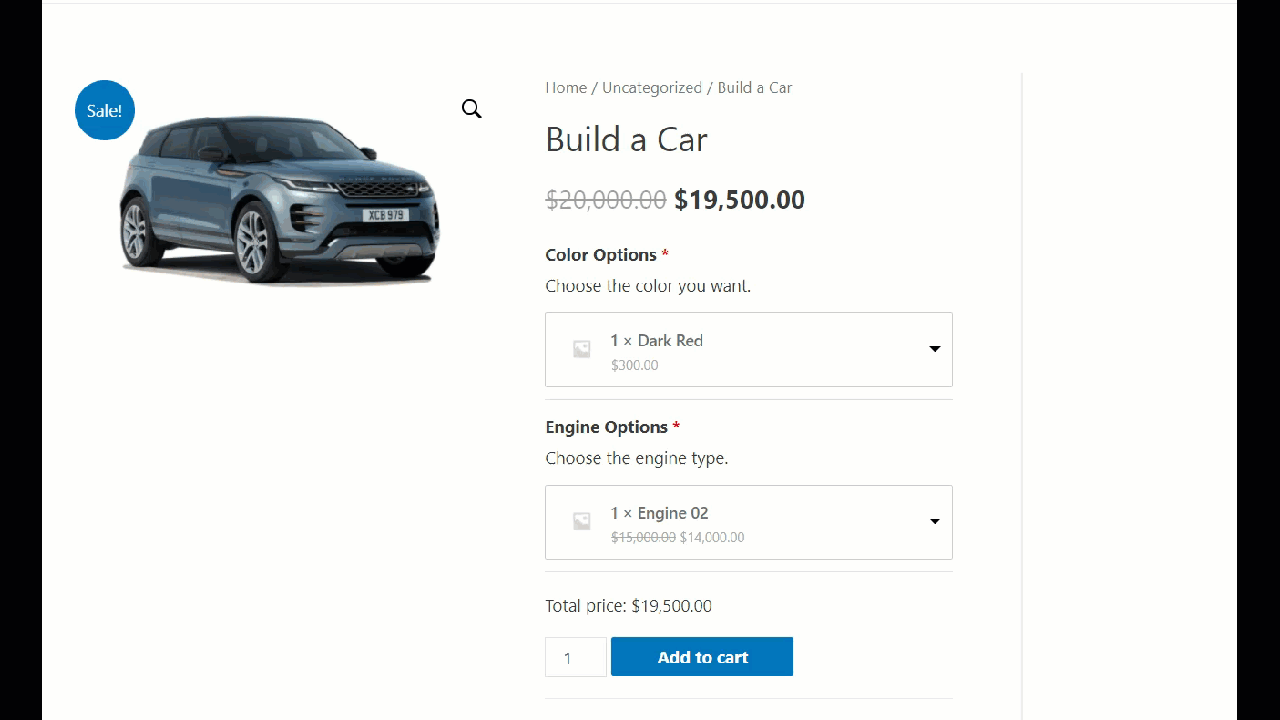WooCommerce Composite Products – The Full Guide
Do you want to learn more about composite products? In this article, we’ll have a look at what WooCommerce composite products are, when you need them, and how you can create them.
Types of WooCommerce Products
To better understand composite products, let’s have a look at the several types of WooCommerce products:
- Simple: This is the most common type of product. A simple product is a unique item that doesn’t have any variation. For example, a cap that only has one size and color.
- Variable: Variable products have some variations in terms of size, color, type, and so on. Products have different attributes that you can combine to create variations of the same product.
- Grouped: Grouped products are a set of products, often related, that you sell together in a pack. For example, you may sell a notebook that comes with a pen and a pencil.
- Virtual: Virtual products are products that can’t be delivered physically. They’re mainly services that can’t be shipped. This type of product has become quite common in recent years and includes chat support, webinars, and so on.
- Downloadable: As the name suggests, these are products that you can download. Downloadable products have additional fields in WooCommerce where shop owners can add files that the user downloads. Normally, after a customer buys a downloadable product, they have access to a link that allows them to download the product they bought. Some of the most common downloadable products are e-books, software, and so on.
- External/Affiliate: These are products you list on your site but are sold by someone else. They are normally used for affiliate marketing, so you have an affiliate link that allows you to get a commission when a user that used your link buys a product.
What Are Composite Products?
WooCommerce composite products are customizable products, sometimes also called “kits”, that customers can assemble. Shoppers can build their own products by combining different elements or sub-products. For example, when buying a laptop, you can allow users to select the processor, RAM, storage, graphic card, and so on. Dell was one of the first companies to let customers customize their orders according to their requirements and had great success.
Another common example is wine shops where users can buy 6 or 12-bottle packs and choose the wines they want to have in each pack. Many gift shops also let shoppers create their customized gift hampers with a selection of products they want.
Composite products have become quite common in the last years because they provide shoppers with more control over their buying products. This allows customers to get exactly what they want instead of having to choose one of the bundles the shop created for them.
Now that we better understand what composite products are, let’s have a quick look at how they differ from product bundles and grouped products.
Difference between Grouped Products, Product Bundles, and Composite Products
People usually get confused between composite products, grouped products, and product bundles. Even though they are all similar, the truth is that they’re different concepts. Let’s look at the difference between them.
Grouped Products
Grouped products are a group of similar single products. They have a parent product where you can add several related simple products as child products. This way, customers can easily add many items to their cart without having to manually visit each specific product page.
Grouped products are usually part of a range of products. For example, if you sell tables, you may group all the wood top tables in a section and let users add them from that range. You may have tables of different sizes and shapes as well as desks, but they will all have similar designs and materials.
Best for: Selling products from a specific range. Customers will be able to add several related products to the cart and complete the purchase faster.
Product Bundles
Product bundles are a number of items or services that you sell together as a package. You can bundle any type of product, from subscriptions to simple to variable products. The items that are bundled tend to be complementary and the main advantage is that it helps both the shop owner (to sell more products) and the customers (because they get a better deal by buying several items together).
With product bundles, you can allow your shoppers to build their own custom bundles and choose the items they want to add.
For example, if you sell software, you may bundle all the products that help your users solve a particular problem or a set of related problems and sell them together as a deal.
For more information about product bundles and how to create them, have a look at this guide.
Best for: Selling individual products as a package. You can give bulk discounts and let customers customize their bundles.
Composite Products
WooCommerce Composite Products are one of the most advanced product types available. It is similar to grouped products but it lets customers create kits of simple and variable products. Once you have created a composite product and assigned some child products, shoppers will be able to customize their kits from the product’s page.
Composite products increase conversion rates and total revenue. Since you are giving customers an easy way to buy more products and customize them to their liking, composite products will help you boost your sales.
For example, you can let shoppers customize the laptop they’re buying by selecting the processor, RAM, storage, graphic card, and so on. Something similar happens with cameras, you can let customers choose a lens, memory card, sunshade, and so on.
Best for: Creating kits and selling products with customized options. Customers can create their own products choosing the features they want.
When Should You Use Composite Products?
Composite products are a great solution when you want to offer product kits that shoppers can customize. This provides more flexibility to the user and improves the shopping experience. For example, when you buy a laptop from Dell’s website, you can choose one of the prebuilt laptops or create your own laptop by choosing the RAM, storage, and software you want. Some car manufacturers let customers select the components, features, engine, and so on to build their own car.
Additionally, by giving customization options to the users, you can reduce the number of pre-purchase support tickets/chats you receive. On top of that, you can boost customer satisfaction and increase the average order value as you can charge more for letting shoppers build their own unique product.
By default, WooCommerce doesn’t allow you to create composite products, so let’s have a look at how you can create them in your store.
How to Create Composite Products in WooCommerce
The easiest way to create composite products is by using dedicated plugins. There are several tools out there such as:
- YITH Composite Products for WooCommerce: A premium plugin created by YITH that comes with some extraordinary features. YITH Composite Products allows you to create composite products in a fast and dynamic way and is also compatible with WPML.
- WooCommerce Composite Products Plugin: This plugin is sold through the official WooCommerce site and was developed by a third-party developer. Overall it’s one of the most complete tools to create and manage composite products in your store.
- WPC Composite Products for WooCommerce: WPC Composite Products for WooCommerce is a freemium plugin that lets you easily create composite products. It’s a good alternative for those who want to start experimenting with composite products without having to spend money. This tool is translation-ready, AJAX optimized and comes with plenty of features The premium version will unlock more functionalities such as linking categories, tags as composite items, and much more.
For more information about composite product plugins, check out this guide that will help you choose the best one for you.
Create Composite Products with WPC
Now let’s see how you can create composite products in WooCommerce with the WPC Composite Products plugin. For this tutorial, we will use the free version that you can download from the WordPress repository.
First, install and activate the plugin. In your WordPress dashboard, go to Plugins > Add New and search for WPC Composite Products for WooCommerce. Then click on the Install button and activate the tool.
After that, you will see the plugin’s settings in the left panel.
You will see several customization options that you can enable:
- Price format: Price format for the composite product inside the archives page
- Selector interface: An HTML selector tag
- Exclude options: Remove certain products from the list
- Alert: Show the inline alert
- Quantity: Display the quantity before the product’s name
- Image: Show the product’s image
- Price: Display the product price
- None option: To display the message Don’t choose any product
- Cart and checkout: To manage the cart and checkout options
- Labels: Manage labels of your text buttons
The plugin comes with a default configuration. We recommend you have a look and adjust it to your requirements. After that, you can create WooCommerce composite products in your store.
To do that, go to the Products section and create a new product. Alternatively, you can edit an existing product.
In this case, we will create a brand new product and customize it. We give our product a name and description.
Then, move to the Product Data section. To create a composite product, select the Composite Product option from the dropdown.
WooCommerce will display the composite product data with a new option called Components.
Setting up the composite product
To set up the composite product, enter a regular price and sale price in the General Tab.
Move back to the Components section and start configuring the options. We have created a product called Build a Car, so you need to let users customize the car. Let’s give shoppers the option to choose the color and engine.
In the Components section, add a new set for color, give it a title and write a brief description. Then, select the sub-options you want to offer. It can be other WooCommerce products, categories, or tags. For this example, we are giving the users three color options by adding three products (Dark Red, Dark Pink, Dark Blue).
You can also customize more options such as price, quantity, and so on. Once you finish that, press + Add Component to add the component to the product.
Now let’s add the second element that users can edit: the engine. We follow the same steps as before and create the new component with two options (Engine o1 and Engine 02).
Similarly, you can add as many components as you want. Once you finish setting up your WooCommerce composite product, publish the product or update it.
Then go to the product page from the frontend and you will see something like this.
In our product, we have configured the product’s price as $19,500. To customize the options and choose different colors and engines, use the dropdown.
This way, your customers will be able to customize the product according to their preferences and get exactly the item they want.
PRO TIP: To simplify the checkout process and boost your conversion rates, check out the WooCommerce Checkout Manager plugin and WooCommerce Direct Checkout. These plugins are designed to help you improve the checkout and will add great value to your WooCommerce store.
Tip to Increase Your Composite Product Sales
If you want to optimize your composite products’ conversion rates, we recommend you use a translation plugin. If you target an international audience, translating your content is essential. By translating your composite products, you’ll be able to reach a wider audience and boost your sales. Most WooCommerce stores have English as their default language, but translating your content can give you a competitive advantage if you want to stand out from your competitors.
Additionally, we recommend you use a currency switcher plugin to display prices in the users’ local currency. For more information about this check out the following guides:
Conclusion
In summary, offering WooCommerce composite products can help you increase your sales. Since you allow shoppers to customize the product according to their preferences, you can expect more revenue and higher customer satisfaction. And the good news is that you can create composite products without using any custom code or hiring a developer.
In this guide, we’ve seen the main differences between composite, grouped, and bundled products. Additionally, we’ve shown you how to set up and create composite products with the WPC plugin. This freemium tool is extremely easy to use and lets you add composite products in a few clicks.
Have you found this post useful? Have you already created composite products in your store? Let us know in the comments below.
